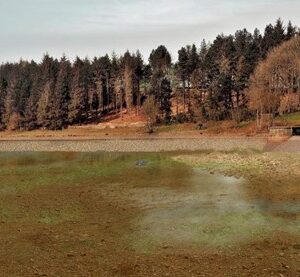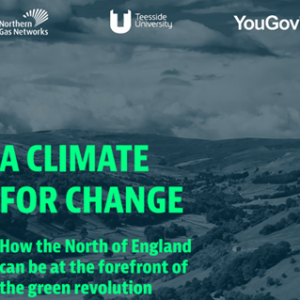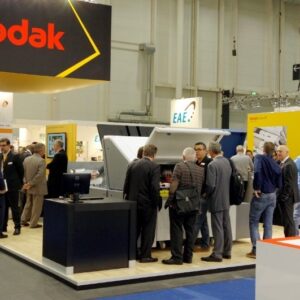Rishi Sunak has put his foot down at COP26, announcing that Britain’s biggest firms must play their part in tackling climate change. It’s a bold and brave approach, as it means they’ll need to roadmap their strategy for net zero without hiding behind a greenwash screen, being assessed annually on their efforts. Those that fail to deliver could face sanctions in the form of fines or the removal from the stock exchange – a move to show that he’ll hit them where it hurts if they don’t comply.
This will undoubtedly impact all businesses, but here at The Lucre Group we specialise in key sectors where we have unrivalled expertise and insights. With this in mind, we’ve picked through the press releases that made the cut in both the mainstream, trade and marketing media to share our favourite stories of the sustainability season:
FOOD & DRINK – A FEW FACTS
- Food systems are responsible for ‘one third’ of human-caused emissions
- Drinks giant, Coca-Cola alone produced 5.24 million metric tons of greenhouse gas (GHG) emissions in 2020 through its global manufacturing network
- Food, drink and tobacco are the largest emitters of any retail subsector due to the large level of grocery sales, being responsible for 62% of all sector emissions
SUSTAINABILITY STAR: CO-OP 26
Co-op has long been known for leading the way with its sustainability measures, so it has widely been deemed clever and appropriate for it to take the bold step of ‘rebranding’ six of its store fronts as ‘CO-OP 26’. An impactful image, particularly in Glasgow where the conference is being held, it helped show the retailer’s commitment to radically reducing its carbon contribution and its goal to becoming a Net Zero business by 2040. Read more about it on Prolific North.
HOME & LIFESTYLE – A FEW FACTS
- The average piece of furniture generates approximately 47 kilogrammes of carbon dioxide, which is the same amount of greenhouse gases produced by burning 5.3 gallons of petrol
- Toys, nappies, teddies… to limit 1.5C global warming by 2100, a child born today should emit eight times less greenhouse gas emissions than their grandparents throughout their lifetime
- 41% of consumers feel guilty about the negative impact of their beauty and grooming products
SUSTAINABILTY STAR: SELFRIDGES SECOND-HAND TOY SHOP
Launched a few weeks before COP26, likely in a bid to avoid the sheer volume of sustainable storytelling during the conference, Selfridges shared its commitment to helping to counteract the Christmas wastefulness with a pop-up pre-loved toy shop selling collectables, antique stuffed toys and classic board games. A clever nod to the nostalgic and planet-conscious consumer, the high-end retailer will undoubtedly win on 2 fronts, both in terms of the public’s perception of its commitment to sustainability, plus improve footfall during the festive season. Either way, it’s a bold move from a retailer which has traditionally prided itself on selling the newest and best of everything. Read more about it on Time Out.
TRAVEL & LEISURE – A FEW FACTS
- Worldwide, flights produced 915 million tonnes of CO2 in 2019 (2020/21 excluded due to pandemic impact)
- Return trip, London to Paris, family of four. Flying = 440kg CO2 Eurostar = 84.8kg CO2
- The hotel sector accounts for around 1% of global carbon emissions
SUSTAINABILITY STAR: TRAVEL FOUNDATION
The Travel Foundation has used COP26 to announce its role in providing support for a newly-launched Glasgow Declaration on Climate Action in Tourism. It will be working with the UN World Tourism Organisation (UNWTO) to ensure businesses can work towards decarbonisation, adapt to climate change and support ecosystem regeneration. Read more about it on Travel Weekly.
TECH & INNOVATION – A FEW FACTS
- Digital technology could help reduce the world’s carbon emissions by about 17%, according to a report from the International Telecommunications Union
- The tech sector is responsible for 2% to 3% of global greenhouse gas emissions.
- Data centres that mine for the cryptocurrency, Bitcoin consumed up to 0.3% of the world’s electricity in 2019, as much as Belgium.
SUSTAINABILITY STAR: BLUEWATER
Single-use plastics are one of the biggest plights on our planet, with bottled water being in the inner circle of carbon-emission culprits. However, a revolutionary Swedish water company called Bluewater is tackling this head on. It has publicly appealed to business and world government leaders at COP26 by launching a white paper reviewing the health hazards of chemicals released into the ocean from millions of single use plastic bottles dumped into our oceans and landfills every year. The paper worryingly confirmed that the endocrine-disrupting chemicals found in single-use bottles posed the number one threat to humankind. Read all about it on IT-TECH NEWS.
If your business is seeking an agency that understands how to deliver sustainable campaigns that have meaningful impact, click the link to find out more about our services and complete the contact form for a call back. https://lucre.co.uk/services/sustainability-services/





